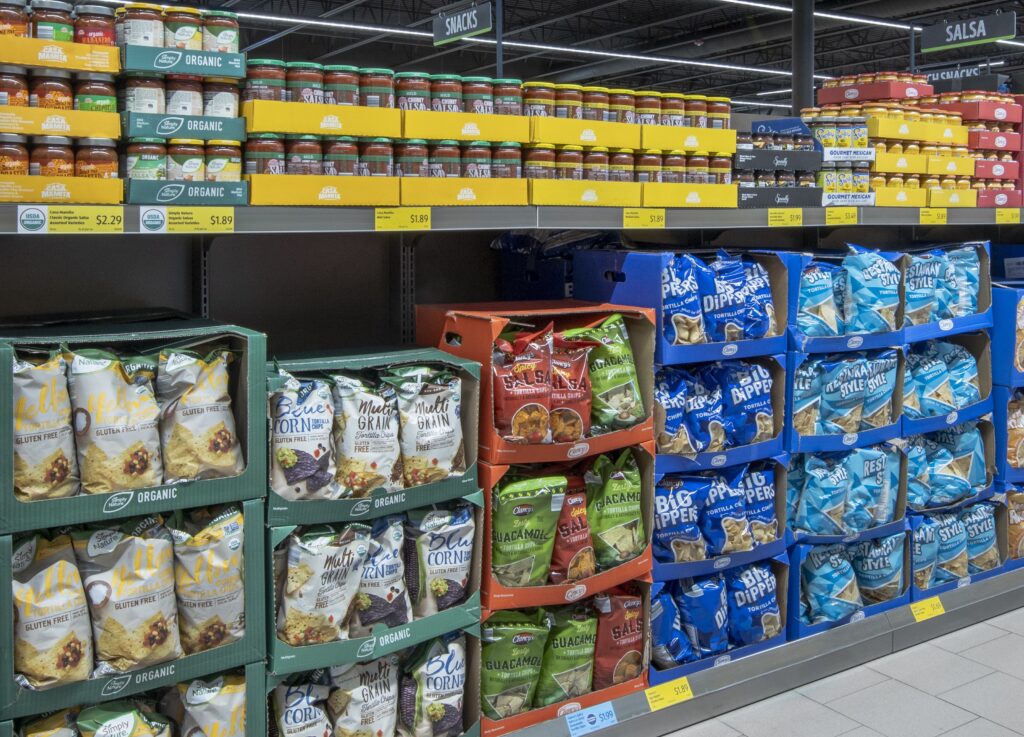
Even with grocery prices on the rise, some shoppers are determined to stick with their favorite brands, no matter if that means paying a little more.
But how much more, exactly? When does that higher price cross the line and become more than “loyal” shoppers are willing to pay?
According to a new report, even those who consider themselves brand-loyal can be tempted to switch to store brands, if the price is right.
Purdue University’s Center for Food Demand Analysis and Sustainability dangled different discounts in front of grocery shoppers, to find out what might prompt them to make the switch. In its latest Consumer Food Insights report, surveyed shoppers expressed a preference for national brands in several categories, but gave up their brand loyalty when presented with a larger discount.
The survey found that the beverage category had the greatest national-brand preference, with 71% preferring brand-name products over a store brand that costs 15% less. 60% of shoppers preferred national brands in the snack food category, and the national- versus store-brand preference was roughly 50-50 for categories including canned and boxed foods, and fresh meat.
That, again, was with store brands costing 15% less. But what if they cost, say, 30% less?
Goodbye, brand loyalty. When presented with a 30% discount for store brands, the national-brand preference in the beverage category dipped six points to 65%, fresh meat brand loyalty dropped ten points to 38%, and snack foods experienced a complete reversal – instead of 60% choosing national brands over store brands, a greater discount prompted 60% to opt for the store brands over national brands.
So it seems shopper loyalty can be swayed, for a price. But apparently, only among those who are the most price-sensitive.
Past studies and surveys have shown that even those with money to spend, don’t like spending too much of it on groceries if they can help it. Higher-income shoppers are more likely than lower-income shoppers to use coupons, for example. And more higher-income shoppers are visiting discount and dollar stores these days.
But higher-income shoppers are apparently more loyal to their favorite brands, even if they could save more money by switching. When Purdue broke it down by income levels to see who would be more likely to switch from name brands to store brands when the discount doubled from 15% to 30%, higher-income shoppers’ preferences barely budged. More than half of shoppers making $50,000 a year or more preferred national brands in general, and stuck to that preference when presented with a larger discount. But those making less than $50,000 were much more eager to make the switch – 44% preferred national brands over store brands that cost 15% less, but that percentage sunk to just 30% when the store brand discount increased.
“This result suggests lower-income groups are more sensitive to changes in food prices,” the report notes. And that price sensitivity is having an ever-greater impact on the grocery industry. A recent report by the Private Label Manufacturers Association found that store brand products now account for 20% of all grocery items sold, and 18% of all grocery dollars spent. A separate report by FMI – The Food Industry Association found that percentage is unlikely to decrease any time soon, if at all. 90% of shoppers told FMI they are likely to continue purchasing store brands, even if grocery inflation subsides.
Overall, more shoppers in Purdue’s survey agreed than disagreed that brand-name food products taste better, and use higher-quality ingredients, which could help explain why some are reluctant to switch. But they generally disagreed that store brands were less nutritious or any less safe.
So shoppers may prefer national brands. But when push comes to shove – it seems they prefer saving money, too.
Image source: ALDI















